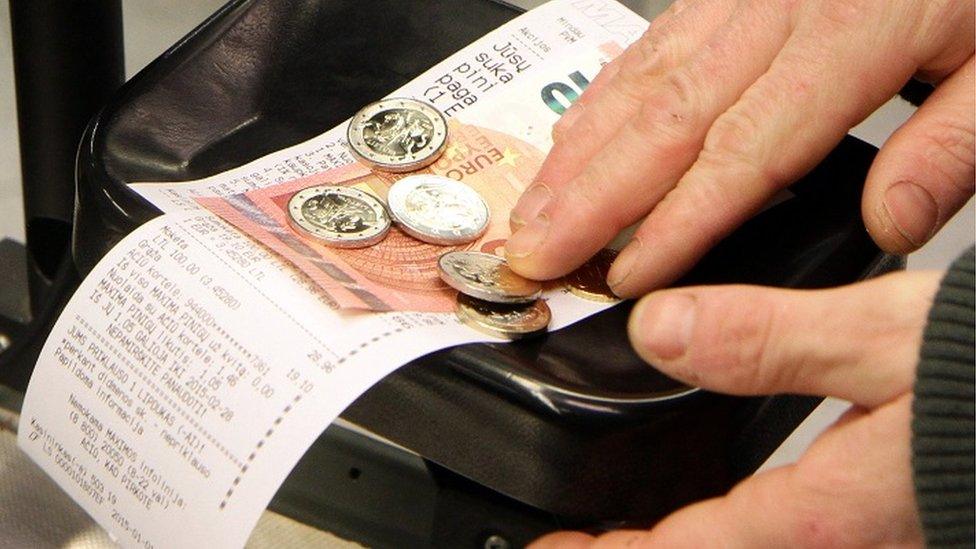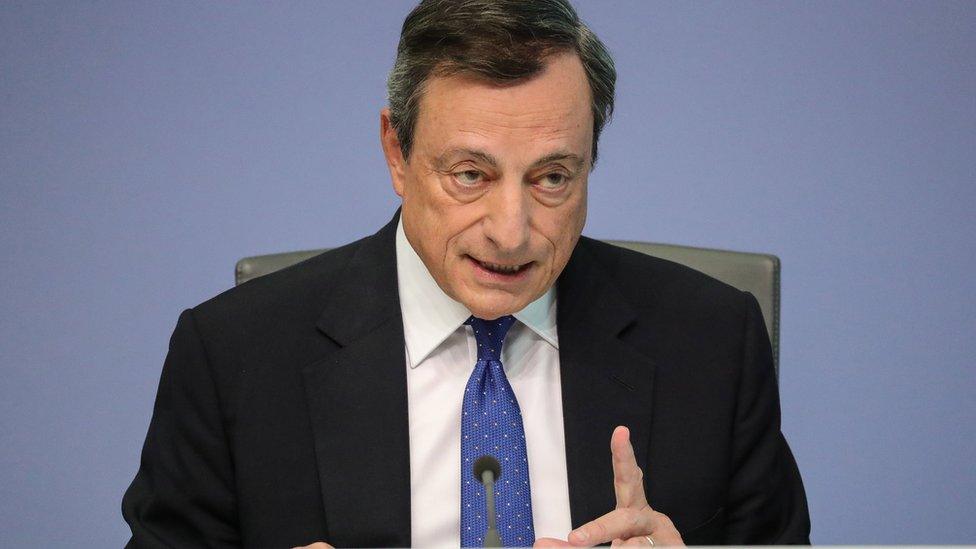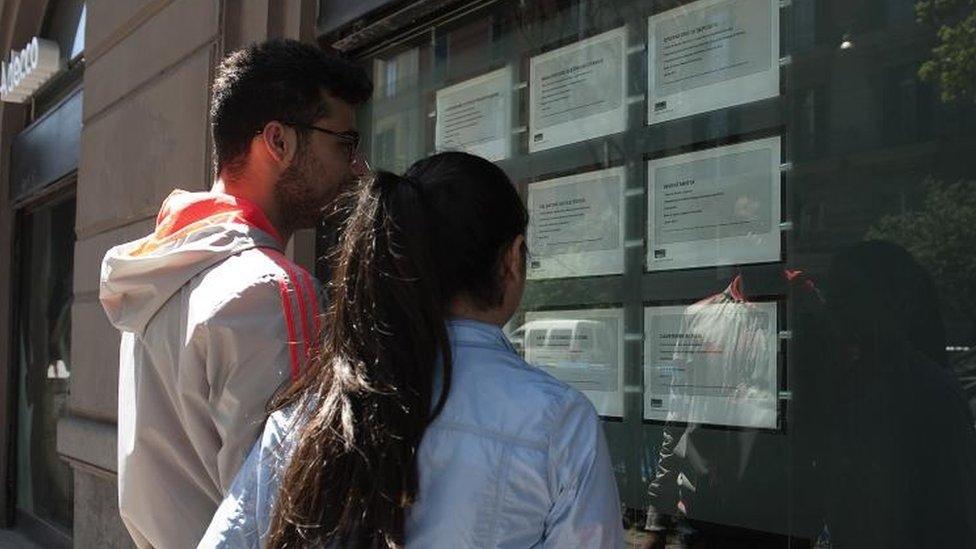Eurozone inflation picks up to 1.9%
- Published

Inflation in the eurozone accelerated in April, returning to the European Central Bank (ECB)'s target.
Initial estimates from Eurostat, external showed inflation in the bloc hit 1.9%. That was up from 1.5% in March, but just below February's four-year high of 2%.
The ECB aims for an inflation rate of below, but close to, 2%.
On Thursday, ECB head Mario Draghi said the eurozone's economic recovery was "increasingly solid" but inflation was not high enough to lift interest rates.
Following its latest meeting, the ECB kept its main interest rate on hold at zero, and left its bond-buying stimulus scheme unchanged.
The bond-buying programme has already been trimmed to 60bn euros (£51bn) a month from 80bn euros. However, there has been speculation that the ECB could scale back its stimulus measures if the eurozone's economic recovery continues.
The main factor behind April's pick-up in inflation was rising energy prices.
Core inflation - a measure that is watched closely by the ECB and which strips out energy and unprocessed food prices - rose to 1.2% in April from 0.8% in March.
The core figure was stronger than expected, and its highest level since September 2013.
However, Howard Archer, chief UK and European economist at IHS Markit, said the ECB was "highly unlikely" to read too much into April's data "as it was clearly lifted by Easter timing distortions".
"The April/March swings in eurozone consumer price inflation - both the headline rate and the core rate - were influenced substantially by pricing distortions, resulting from the fact that Easter occurred in mid-April in 2017 compared to late March in 2016."
Separate figures from France showed that the country's economic growth rate slowed in the first three months of the year.
France's economy grew by 0.3% in the quarter, down from a rate of 0.5% in the final three months of 2016.
The slowdown was partly due to weak consumer spending, after unseasonably warm weather led to lower spending on clothes and heating bills.
- Published27 April 2017

- Published3 April 2017
